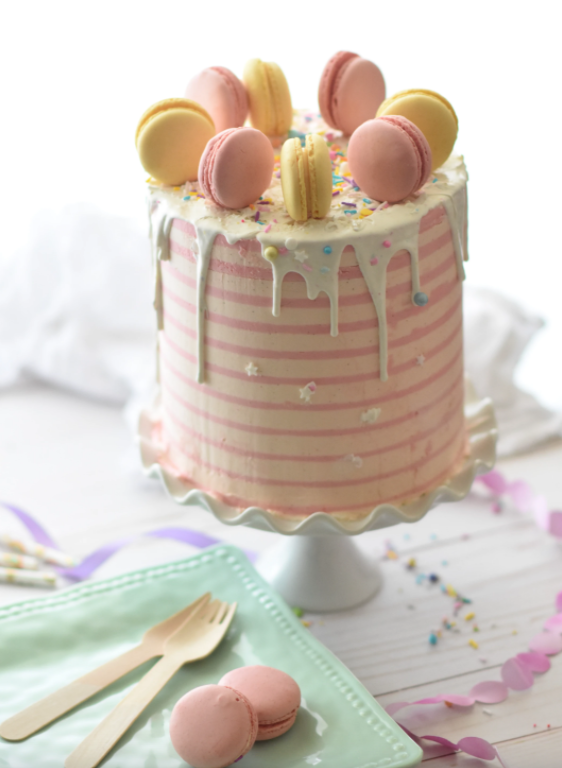Are you fond of fondant-covered cakes? This icing has gained incredible popularity because of its smooth finish and the possibilities it provides for decoration. Unlike marzipan and buttercream frosting, it is almost flavorless.
 Photos By: Unsplash
Photos By: Unsplash
There are different types of fondant, such as rolled, poured, and chocolate-based. These can be either homemade or commercially made with the help of continuous machines. Such machinery is primarily used by bakeries and confectionaries, which need to produce large quantities of fondant. The production sizes range from 1200 to 4000 lb.
We hope the information below will help you get familiar with the types of fondant and continuous machinery.
What is fondant?
It stands for a form of icing, which is used for coating cakes and baked goods. It’s important not to confuse this term with ‘fondue’, even though both words have the same word origin. Nevertheless, fondue in French has the meaning of melted cheese. Fondant is a popular choice of icing for sculpting and decoration of cakes, pastries, and cupcakes. Its texture is what makes it specific and unique.
In addition, this type of coating is capable of withstanding changes of temperature in a much better way than buttercream. Most importantly, it allows various opportunities for flavoring and coloring, which is why the largest part of bakers prefer it over other icing types. Fondant is available in multiple forms, such as rolled and poured. The rolled variant has a similar texture to clay, whereas the poured variant is gelatinous.
What it’s made of?
Regarding the ingredients, fondant is made of corn syrup, water, and sugar. If used for shaping and sculpting, glycerin or gelatin should be added. Also, it can be made melted marshmallows and powdered sugar, which is a less common method. Learn more about the ingredients, preparation, and uses of corn syrup.
Furthermore, regarding edibility, this coating is 100% edible, as it’s made of edible ingredients. Some individuals tend to remove it from cakes, as they don’t like the flavor or the texture, not because it’s not edible.

Types
As already mentioned, fondant comes in two main types, rolled and poured. For instance, the commercial rolled variant isn’t universal but varies across manufacturers. Nevertheless, in most cases, it’s made of oil, sugar, glycerin, corn syrup, and gelatin or stabilizing gums. Once bought from a store, the content can be easily rolled. It’s easily sliceable and has a matte finish. Different oils and extracts can be added to this icing in order to become flavored.
Moreover, rolled fondant can be colored and stored for months at room temperature if placed in an airtight container. Nevertheless, recipes differ across makers, meaning buyers will probably try various brands before choosing the best one.
Another popular variant is the chocolate-based rolled fondant, which has the same ingredients as the traditional one, plus dark or white chocolate. It can be commercial or homemade. There are various fondant machines used by bakeries, cereal companies, and confectioneries. They automate the procedure of making this icing, thus producing it in a large amount. Chocolate is responsible for adding flavor and elasticity to the icing.
On the positive side, this coating tears and creases less than the traditional variant. Anyhow, regarding flavoring and coloring, only oil-based flavoring and candy colors can be used. Also, it’s considered to be more perishable.
In contrast, the poured variant is a more liquid form of coating, which is poured over cakes and baked goods to provide a smooth finish. There is a higher amount of liquid, thus making it suitable for filling pastries and candies. Once it’s poured, it takes some time to dry to avoid smudging.
What makes it better than buttercream?
The popularity of fondant has overshadowed royal icing and marzipan, but it still has one competitor left, known as buttercream. Buttercream frosting is prized for its creaminess and deliciousness, but it has its own set of disadvantages.
Given it melts easily, buttercream must be served at the right temperature. When baking cakes, they should be prepared closer to the date of consumption, as buttercream goes bad quickly. Nevertheless, in view of decoration, errors can be fixed more easily.
Perhaps the only similarity of fondant with buttercream is the possibility of getting colored. Otherwise, the former protects baked goods and cakes from spoiling by sealing their outside surface off. Consequently, cakes can be prepared days in advance, then stored in a refrigerator. The taste will still be yummy and fresh when taking them out of the fridge. Check this out for some ways for making buttercream frosting.
Regarding the temperature of serving, fondant should be served at room temperature. It doesn’t melt easily, meaning it provides more flexibility. Also, the possibilities for decorating are limitless with this icing, as all kinds of shapes can be formed out of it. However, fingerprints are incredibly visible on the surface and a bit tough to repair. Therefore, it isn’t the best choice for clumsy bakers.

What about continuous fondant machines?
This machinery is essential equipment in bakeries, confectioneries, and cereal companies worldwide. These are made from stainless steel and are known for their simple operation. They are low maintenance and fully automated. There are multiple production sizes to consider, up to 1200, 2400, and 4000 lb.
Models up to 1200 lb. have a capacity to produce 545 kg per hour. Those up to 2400 lb. produce up to 1090 kg an hour. Models up to 4000 lb. produce 1800 kg an hour. These machines are engineered to last, providing impeccable functionality, durability, and reliability. Such machinery relies on complex science to produce technically correct products and be user-friendly.
The applications of these machines include bakery icing RTU, confectionary crèmes, nougat, cereal frosting, as well as pure sugar, 80/20, and 90/10 fondant. They produce stable sugar crystal sizes between fourteen and sixteen microns.
A final note
Fondant has become a trend over the last decade, replacing a large number of other icings.
It’s flexible and easily customizable!
